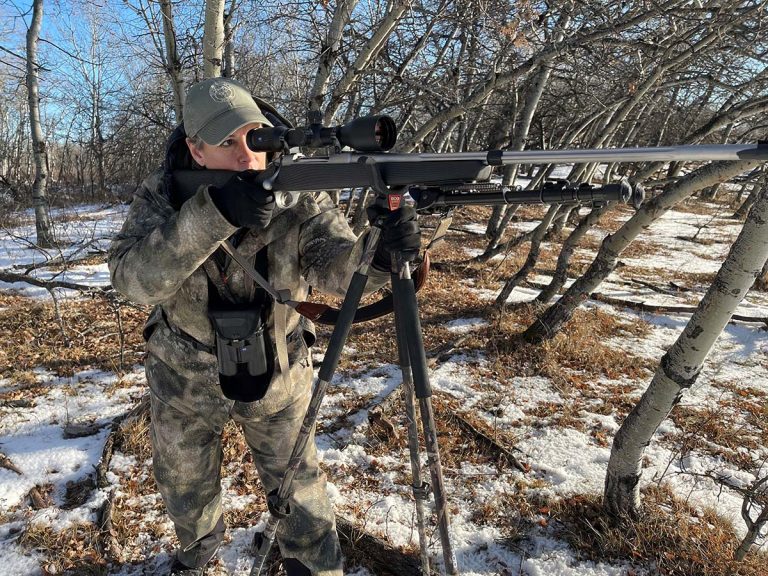Seven-millimeter cartridges (7mm) have been around since the advent of the 7mm Mauser in 1893. Still, it was the arrival of the 7mm Remington Magnum, in 1962, that really skyrocketed the caliber’s popularity in North America. Since then, we’ve seen a bevy of new 7mm cartridges, and many hunters are looking to them as the ideal choice for whitetails and mule deer. But are they? Let’s take a look at some of the more popular 7mm cartridge choices.
7mm Remington Magnum (RM)
I’ll admit to having a bit of a love/hate relationship with this cartridge and never fully embraced it until the past decade or so. I always felt it made a lot of noise and produced a lot of recoil for minimal gains over cartridges like the 270 Winchester. The biggest downfall early on for the 7mm Rem Mag was bullet selection. It was a speedster with lighter-weight bullets, but their low ballistic coefficient (BC) made them a poor long-range choice and heavier .284 bullets were typically round-nosed and again suffered from a poor ballistic coefficient.
It was when the long-range craze started to take hold and manufacturers responded with heavy-for-caliber bullets with high ballistic coefficients, that the 7mm RM really began to take its place in the spotlight. I picked up my first 7mm RM about 18 years ago. Truth be told, I had a pre ’64 Winchester Model 70 rechambered from 264 Winchester Magnum. Quality 6.5 bullets were relatively unknown at that time, but several manufacturers were offering them for the 7mm. It kind of seemed a logical choice as I was just getting into long-range shooting as well.

The 7mm Rem Mag did not disappoint at long range and with a muzzle velocity of around 3,000 fps with a high BC, 162-grain bullet, there was still plenty of impact velocity with a cup and core bullet out to 1,000 yards or more. Now the noise and recoil made sense for the long-range gains. I’ve owned several additional 7mm Rem Mags since then and for the western hunter in particular, it may just be the perfect choice for game from antelope to elk.

7mm Weatherby Magnum
The 7mm Weatherby Magnum is a high-performance cartridge that has made a significant impact on hunting since its introduction in 1944. Known for its impressive velocity, typically around 3,200 to 3,300 fps with heavy bullets, it offers a flat trajectory that excels in long-range shooting. The belted case design allows for a larger powder capacity, contributing to its remarkable performance. This caliber is favored by hunters targeting medium to large game, such as deer and elk, due to its accuracy and terminal performance.
While the 7mm Weatherby Magnum delivers excellent results, it does come with noticeable recoil, which shooters should be prepared for during extended sessions. Factory ammunition is widely available but can be slightly pricier than comparable calibers, making handloading a popular option for those looking to fine-tune their loads. Overall, the 7mm Weatherby Magnum remains a staple for big-game hunters seeking a powerful and effective 7mm option in the field.
7mm Backcountry
The 7mm Backcountry cartridge is a cutting-edge option for hunters seeking high performance in a compact package. Designed to deliver magnum-level velocity and energy, it excels in various hunting conditions, particularly with shorter-barreled rifles. With the ability to achieve 3,000 fps muzzle velocities using 170-grain bullets from a 20-inch barrel, the 7mm Backcountry offers impressive ballistics that rival traditional magnum cartridges. This makes it suitable for everything from remote western hunts to box blind setups, providing hunters with less drop and wind drift for accurate long-range shooting.
Featuring Peak Alloy case technology, the cartridge allows for higher chamber pressures than traditional brass ammunition, resulting in enhanced muzzle velocities. Custom rifle makers have reported exceptional accuracy with the 7mm Backcountry, comparable to larger calibers like the .300 Norma, yet with recoil similar to that of a .308 Win. Engineered to work seamlessly with shorter-barreled suppressed rifles, this cartridge is an excellent choice for those prioritizing stealth and compactness in their hunting gear. Overall, the 7mm Backcountry combines high velocity, accuracy, and innovative design, making it a standout choice for modern hunters seeking versatility and performance in the field.
7×57 Mauser
The 7×57 Mauser, also known as the .275 Rigby, is a classic cartridge that has stood the test of time since its introduction in 1892. Renowned for its versatility, the 7×57 Mauser can deliver excellent accuracy and terminal performance across various game sizes. It typically fires bullets in the range of 140 to 175 grains, making it suitable for hunting deer, antelope, and even larger species like elk when using the appropriate bullet weight. It’s moderate recoil makes it a favorite among hunters who appreciate a balance of power and shootability.
This cartridge’s design features a rimless case, which allows for smooth feeding in modern bolt-action rifles. The 7×57 Mauser has a solid reputation for its effectiveness in the field. While factory ammunition is available, handloading offers enthusiasts the ability to customize loads for specific hunting applications. Overall, the 7×57 Mauser remains a respected choice among hunters seeking a reliable and efficient caliber with a rich history.
7mm-08 Remington
While the 7mm-08 Remington has technically been around as a wildcat since 1952, it wasn’t until Remington brought it mainstream in 1980 that shooters began to take notice. It is nothing more than a necked-down 308 Winchester, but this nifty little cartridge fits the bill for those in search of a low recoil 7mm. As with most cartridges based off the 308 Win, the 7mm-08 is incredibly efficient and spits a 139-grain bullet at around 2,800 feet from a 20-inch barrel. It is the ideal choice for someone in search of a lightweight, compact rifle. I’ve teased many of my male friends that use them, that’s it’s a great cartridge for women and children and the truth is, it is. But it’s also a great cartridge for any hunter that appreciates low recoil and a compact rifle.
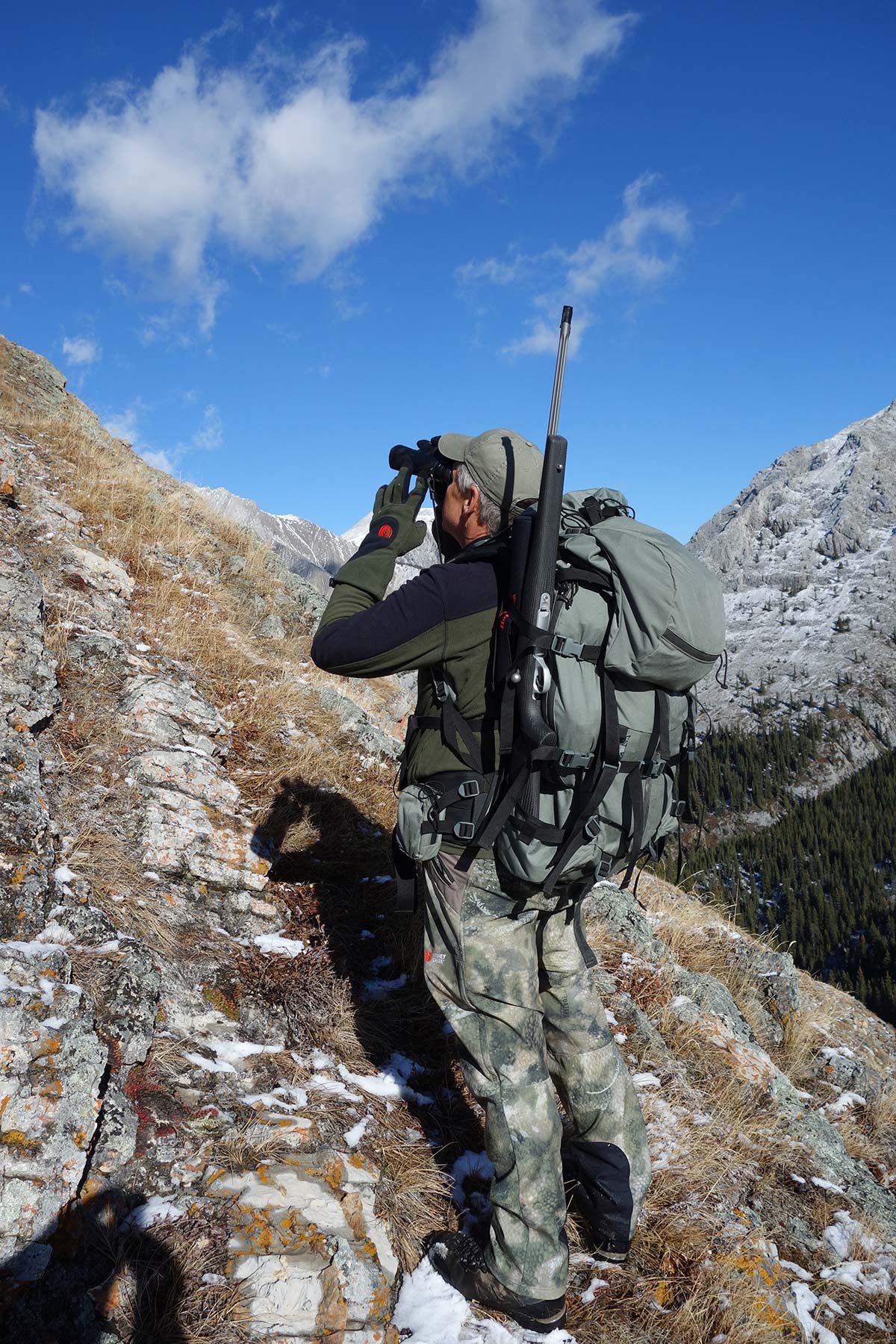
I finally gave in and picked up a Sako 85 Carbonlight, chambered in 7mm-08 Remington a few years ago. I bought it as a whitetail rifle to hunt some of the thicker stands of timber around home, but the more I shot it, the more I came to appreciate just how versatile it was. It went on numerous sheep hunts with me, and we even took it on a plains game hunt in South Africa. The older I get, the more I appreciate lightweight rifles and rifles without excessive recoil. While definitely not a long-range speedster like the 7mm RM, the 7mm -08 holds its own out to about 500 yards. From backpack mountain hunting to hunting the thick stuff for whitetails, the 7mm -08 is right at home.
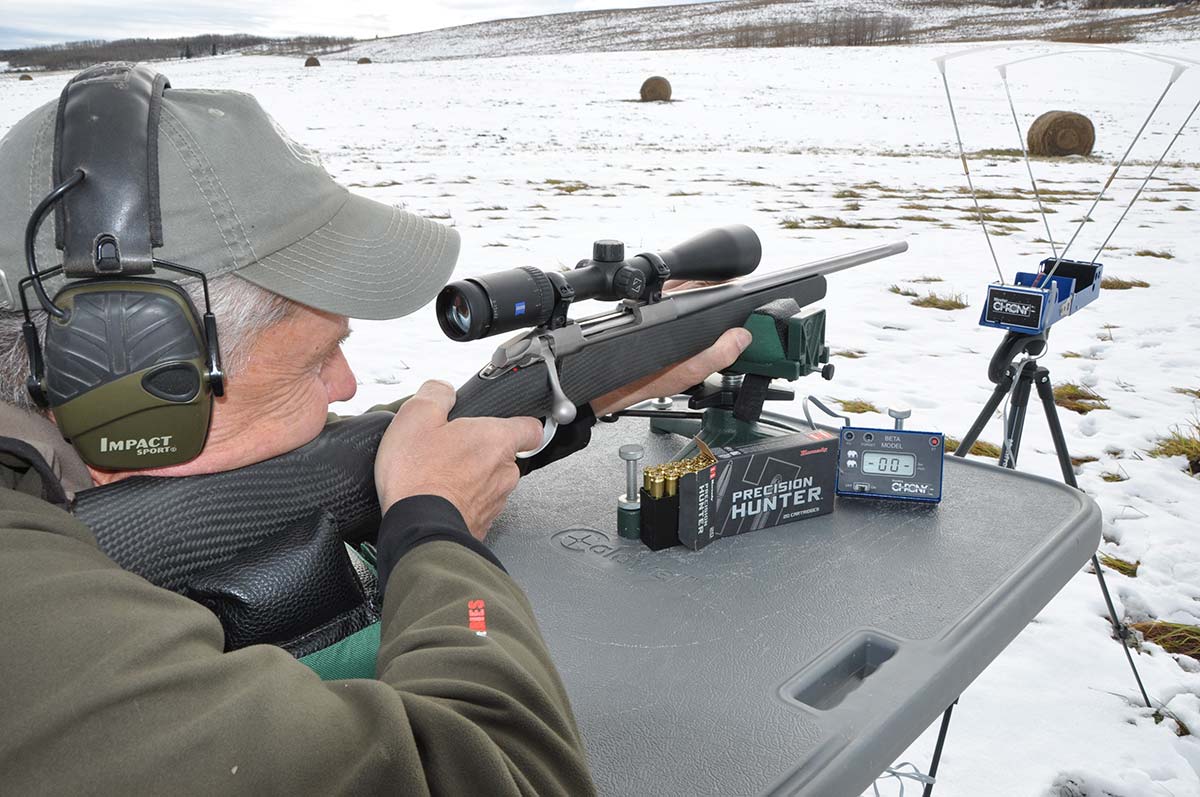
28 Nosler
For many shooters, speed is the ultimate measure of a cartridge’s effectiveness and Nosler capitalized on this fascination in 2017 with the launch of the 28 Nosler. With a muzzle velocity of around 3,200fps with a 160-grain bullet, the new cartridge from Nosler was faster than the benchmark 7mm Rem Mag, so in many shooters’ minds it had to be better. And it did offer up the advantage of a non-belted case. It is essentially a shortened version of the super speedster of 7mm’s, the 7mm Remington Ultra Mag, which was built off the 300 Remington Ultra Mag. Remington saw limited success with these cartridges due in part to their introduction just prior to the long-range craze taking off but also because they were only available in Remington or custom rifles. That and the 7mm Remington Ultra Mag had the longest case of all the 7mm cartridges and this made using long, high BC bullets difficult as they would not fit into many standard long-action magazines. Nosler addressed this issue by shortening the case but only saw minimal velocity loss. For those looking for a fast 7mm that could utilize long, high BC bullets, the 28 Nosler instantly grabbed their attention.
With the 28 Nosler finding its way into more manufacturers’ lineups, it should see an increase in popularity. One of the death sentences for new cartridges is manufacturers making them proprietary to their line of firearms or ammunition. A cartridge must be available from several manufacturers to have wide acceptance and a long-life span. As much as I’m not a fan of high velocity cartridges, if you are looking for a cartridge to use in the west on mule deer and elk, the 28 Nosler is worth a serious look. It’s more than capable beyond a thousand yards and has plenty of knockdown power for elk. If I had no intentions of shooting beyond 500 yards, I’d likely give it a pass. All the extra powder and recoil just wouldn’t be worth it.
7mm PRC
The most recent comer to the 7mm family, introduced by Hornady in 2022, is the 7mm PRC. Following in the footsteps of their popularity with the 6.5 and 300 PRC, the 7mm PRC is being touted by many as the perfect 7mm cartridge. It is based on the 375 Ruger case and offers up slightly better velocities to the 7mm Rem Mag, but the big advantage is the shorter case length, which permits the use of very heavy for caliber bullets. Hornady is offering it factory loaded with the 175-grain ELD-X for hunting and with the 180-grain ELD Match for competition. It can also be handloaded quite a bit hotter than the factory loads. Hornady shows a velocity of 3,150 for the 162-grain ELD-X with 68.8 grains of RL-26 powder. The 7mm Rem Mag tops out at about 3,000 fps with the same bullet with 69.3 grains of RL-25 powder.
With this ability to utilize longer, heavier bullets, rifle manufacturers are responding with faster rifling twists in their 7mm PRC offerings. This is truly a long-range cartridge, and western mule deer and elk hunters are definitely the greatest beneficiaries, especially those who shoot factory rifles. While factory offerings in 28 Nosler are limited, there is a wide variety of rifles chambered in 7mm PRC. The one drawback with the 7mm PRC, is that most rifles are designed to utilize the long, heavier bullets, so recoil is going to be stout and the option to drop down to the lighter offerings that the 7mm Rem Mag shoots well, is likely not an option. Hornady does offer a 160-grain for the 7mm PRC in their mono-metal CX bullet line, As the mono metals are longer for weight than similar cup and core style bullets, it is a lighter weight option for the PRC.
As with the 28 Nosler, the 7mm PRC is best suited to long-range shooting. If you aren’t planning on ever shooting beyond 500 yards, there is likely no reason to look at one. But for Western hunters, especially those who find themselves faced with longer pokes at elk and mule deer, it should absolutely be a consideration.
280 Remington
The .280 Remington, introduced in 1957, is a versatile cartridge with a great balance of performance and shootability. Known for its flat trajectory and effective terminal ballistics, the .280 Remington typically fires bullets ranging from 140 to 160 grains, making it suitable for hunting a wide array of game, including deer and elk. With muzzle velocities around 2,900 to 3,000 fps, it provides ample power while maintaining manageable recoil, making it a popular choice among hunters who prefer a smooth shooting experience. The .280 Remington is considered a 7mm caliber. It is often categorized alongside other 7mm cartridges because it has a bullet diameter of approximately .284 inches, which falls within the 7mm designation. This makes it part of the broader family of 7mm calibers, including the 7mm Weatherby Magnum and the 7×57 Mauser.
One of the standout features of the .280 Remington is its compatibility with handloading. The .280 Remington offers a great platform for handloaders, allowing for customization of loads to suit specific hunting scenarios and preferences, while still providing performance close to that of the 7mm Remington Magnum. Overall, the .280 Remington remains a respected option for hunters seeking a capable and reliable caliber for diverse hunting scenarios.
Many other 7mm Calibers to Choose from
This is by no means all the 7mm offerings available. At my last count, there were around 40 different 7mm cartridges, and even that could be low. Some seemed to have short shelf lives and others never really found their way to North America. When I was in Romania hunting fallow deer, I borrowed a Tikka chambered in 7×64 Brenneke from our outfitter. It was my first exposure to the cartridge, and it performed admirably on these whitetail-sized deer. It is quite a popular chambering in central and eastern Europe but rarely seen in North America. I shot a Sako M695 chambered in 7mm Shooting Times Western (STW) for several years. This speedster was a cartridge before its time and suffered from poor bullet selection and has all but disappeared now. The 7mm Short Action Ultra Magnum (SAUM) from Remington still has a following, especially among match shooters, but the 7mm Winchester Short Magnum (WSM) has all but disappeared.
Buy 7mm Cartridges here:
Compare: 7mm Cartridges to a Traditional 30-06 Springfield
A fair question arises when someone might ask why choose a 7mm cartridge over the venerable 30-06 Springfield. When comparing the most popular 7mm cartridges to the traditional, well-known 30-06 Springfield from a hunting performance standpoint, several key factors come into play:
Ballistics and Velocity
The 7mm Remington Magnum is known for its high velocity and flat trajectory, typically achieving muzzle velocities around 3,000 to 3,200 fps with bullet weights ranging from 140 to 180 grains, making it suitable for long-range hunting. The 7mm-08 Remington offers a more moderate velocity, generally around 2,800 to 3,000 fps with 140 to 150 grain bullets, ideal for deer and similar-sized game, providing good accuracy and manageable recoil.
The .30-06 Springfield is versatile and can fire bullets ranging from 150 to 220 grains, achieving velocities typically between 2,900 and 3,000 fps. Due to its heavier bullet options, it is renowned for its effectiveness on larger game, such as elk and moose.
Recoil
7mm cartridges generally produce less recoil than the .30-06 Springfield, especially the 7mm-08 Remington. This can make the 7mm options more comfortable for extended shooting sessions, particularly for younger or less experienced hunters.
Game Suitability
Your 7mm Remington Magnum and .30-06 Springfield are both excellent choices for larger game. The .30-06 has the edge in terms of heavier bullet options, making it a preferred choice for hunting big game like bears and moose. The 7mm-08 Remington excels in hunting deer and smaller game, where its flatter trajectory and lower recoil are advantageous.
Ammunition Availability
The .30-06 Springfield is one of the most popular cartridges in North America, with a wide variety of factory ammunition available, making it easy to find loads for various hunting situations. While 7mm cartridges are also widely available, the selection may not be as extensive as that for the .30-06, particularly in more remote areas.
Overall Effectiveness
Both the 7mm cartridges and the .30-06 Springfield are effective for hunting when the right bullet is chosen for the game being pursued. The key difference lies in the bullet weight and type, with the .30-06 providing a broader range for heavier game. At the same time, the 7mm options offer flatter trajectories and less recoil, making them suitable for a variety of hunting scenarios, especially wide-open plains shooting.
In summary, the choice between 7mm cartridges and the .30-06 Springfield often comes down to personal preference, intended game, and shooting comfort. Each has its strengths, making them both valuable options for hunters.

Best 7mm Rifles
If I were looking for a new 7mm caliber rifle these days, here are some that I’d consider. First it would benefit you to read Getting a Proper Fit for Your Rifle.
Most Cost Effective
The Mossberg Patriot is hard to beat for the price. At just over $500, it offers a lot of value with composite stock and Cerakote barrel. This chambered in 7mm-08 would be the perfect entry-level whitetail rifle.
The Patriot’s affordability doesn’t compromise its performance. It features a fluted barrel for weight reduction and heat dissipation, along with a user-adjustable trigger that can be fine-tuned to the shooter’s preference. With its lightweight design and reliable bolt action, it provides an excellent platform for beginners while still offering the accuracy and durability needed for successful deer hunting.
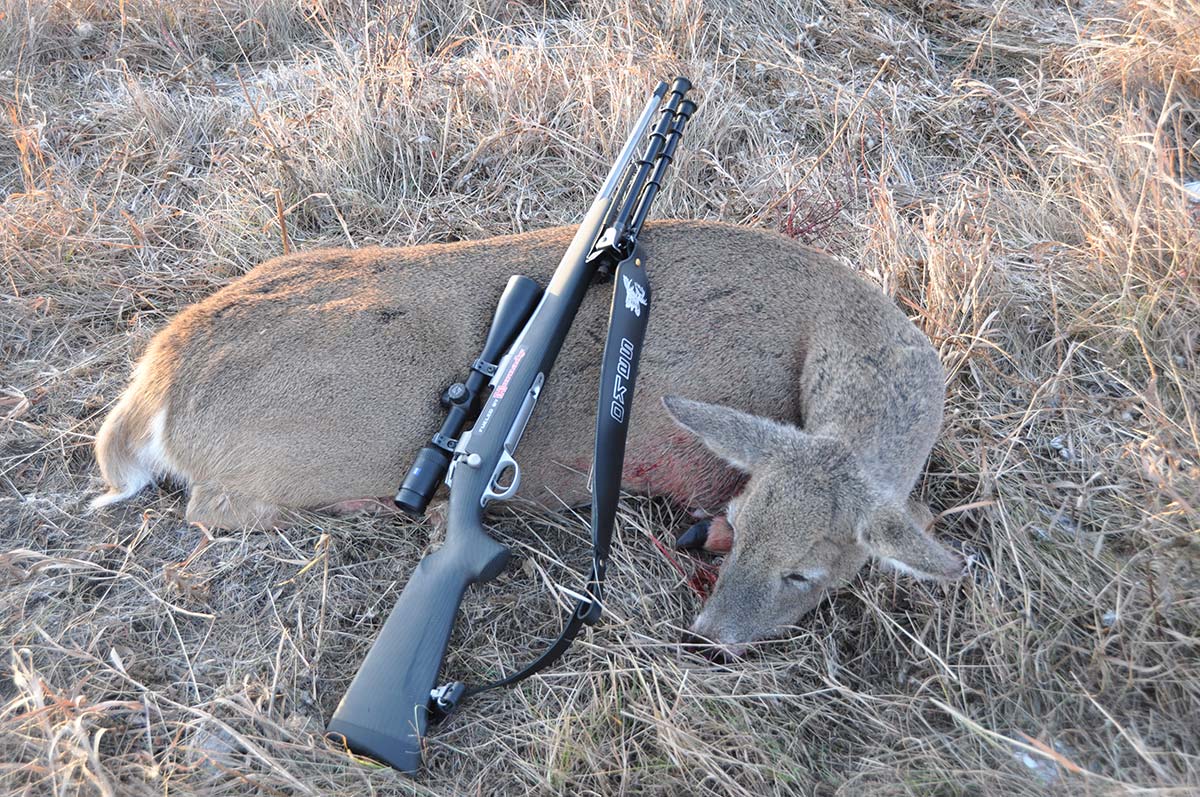
Best Value
The Tikka T3x is packed with features and at 6 ½ pounds, it’s equally at home in the mountains or in the wide-open prairies. Both it and the upscale Sako share the same hammer-forged barrel and it comes with an MOA guarantee of accuracy. It’s available in both 7mm -08 and 7mm RM.
The Finnish-made rifle has earned a reputation for exceptional craftsmanship and reliability in various weather conditions. Its modular synthetic stock allows for customization, with interchangeable pistol grips and fore-end accessories to suit individual preferences. The T3x features a smooth, adjustable trigger mechanism and a two-lug bolt with a 70-degree throw for fast cycling and scope clearance. Hunters particularly appreciate its silky-smooth action and consistent out-of-the-box accuracy, making it a popular choice among serious sportsmen who want premium quality without stepping up to the higher price point of the Sako.

Best Mountain Rifle
The brand new Sako 90 Peak is taking the market by storm. It is one of the lightest production rifles made and features a true carbon-fiber stock. Rumour has it, it will be available with a carbon-fiber barrel as well next year. A 7mm RM would be right at home in search of sheep or goats.
This premium Finnish offering combines cutting-edge materials with Sako’s legendary build quality, resulting in a rifle that weighs in at an astonishing 5.5 pounds without sacrificing performance or durability. The Peak’s three-lug bolt design ensures smooth, secure lockup while its match-grade barrel delivers sub-MOA accuracy even in challenging field conditions. Mountain hunters particularly value its perfect balance and ergonomics, allowing for quick target acquisition during those brief shooting opportunities common in high-altitude pursuits. While commanding a premium price point, serious backcountry hunters consider it an investment that pays dividends when every ounce matters on multi-day expeditions in rugged terrain.
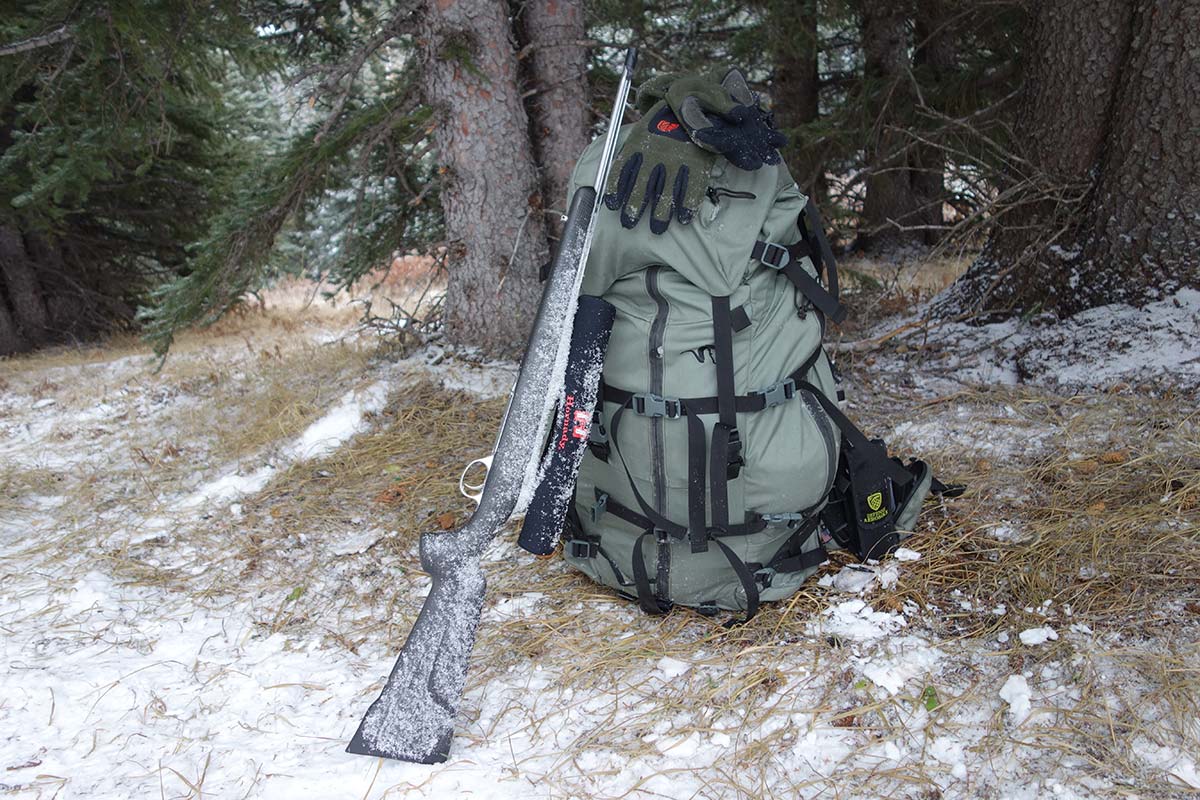
Best Elk Rifle
The Browning X-Bolt Speed with its composite stock and Cerakote barrel make this a durable choice for chasing elk and the big bonus is that it comes chambered in 7PRC and has a 1:8 rifling to handle those heavy bullets.
This well-engineered rifle features Browning’s adjustable Feather Trigger system that breaks crisp and clean, enhancing accuracy in high-pressure hunting situations. The X-Bolt Speed’s spiral-fluted bolt and barrel reduce weight while maintaining structural integrity, and its Inflex recoil pad effectively mitigates felt recoil from the powerful 7PRC cartridge. The rifle’s three-lug bolt with a 60-degree throw provides quick cycling and ample scope clearance, while the detachable rotary magazine ensures reliable feeding even with longer, heavy-for-caliber projectiles.
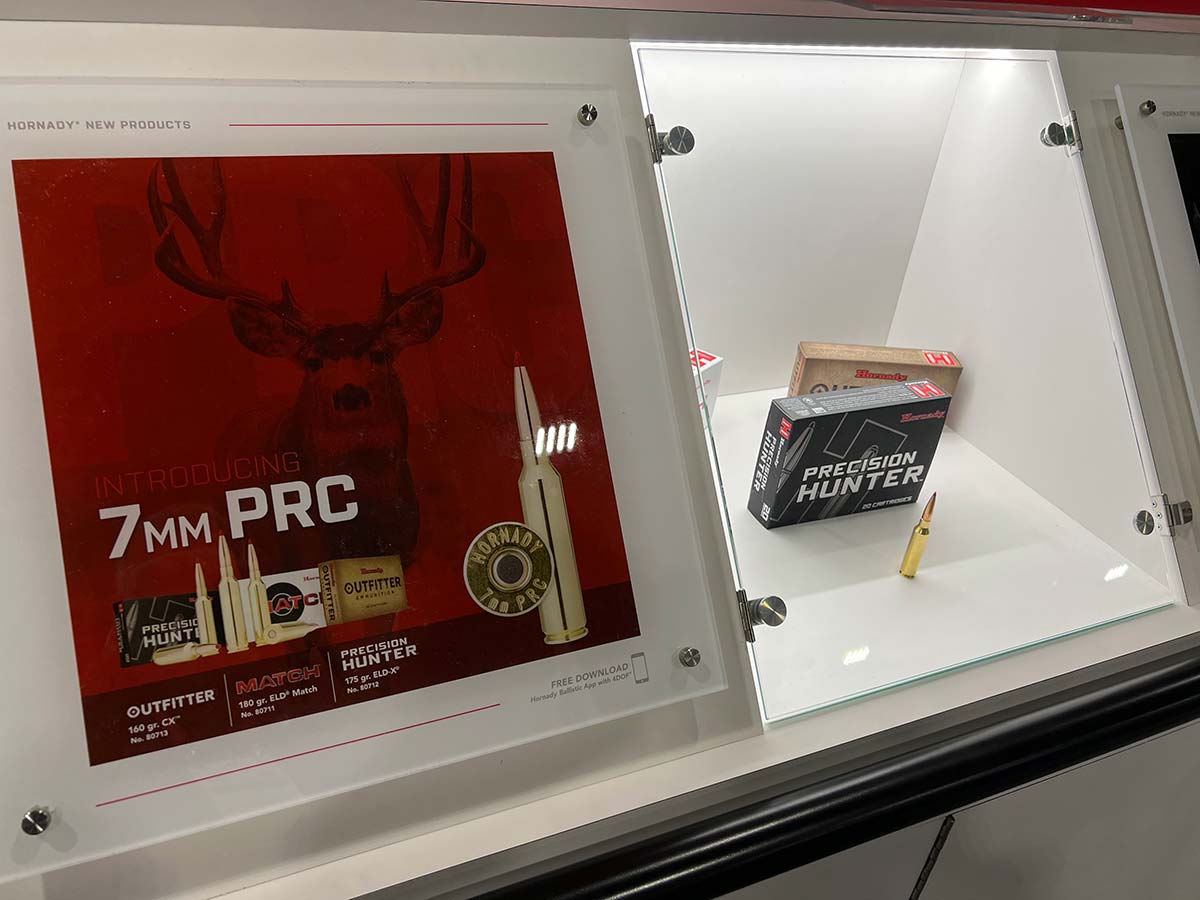
Best White Tail Deer Rifle
Ruger has long built a quality rifle, and their Ruger American Gen II is right at home in the east’s hardwoods and the west’s foothills in search of white-tailed deer. With a 22” barrel and synthetic stock, the American chambered in 7mm-08 is a pleasure to carry and shoot.
This no-frills workhorse offers impressive performance at an accessible price point, featuring Ruger’s Power Bedding system that securely locks the receiver to the stock for enhanced accuracy. The American’s cold hammer-forged barrel provides excellent shot-to-shot consistency and longevity, while its adjustable Marksman trigger allows shooters to fine-tune pull weight between 3 and 5 pounds.
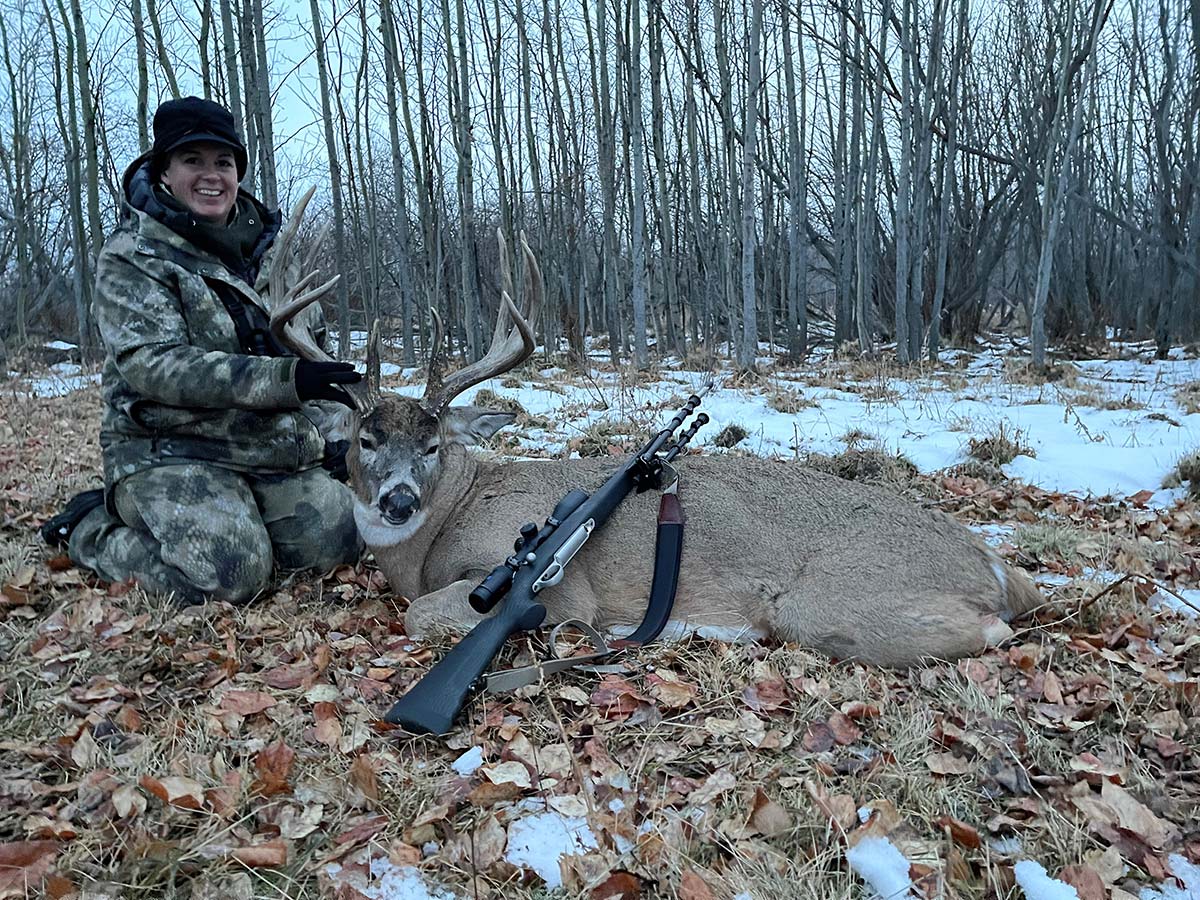
Best Mule Deer Rifle
The Savage Arms 110 Ultralite chambered in 28 Nosler weighs in at six pounds and features a composite stock and carbon-fiber barrel to ensure durability and accuracy. The barrel has a 1:8.4 twist and will handle the long .284 bullets with ease.
This innovative rifle combines Savage’s proven action with cutting-edge carbon fiber technology from PROOF Research, creating an ultralight platform that doesn’t compromise on long-range performance. The 110 Ultralite features Savage’s user-adjustable Accu-Trigger system, allowing shooters to customize pull weight without compromising safety or reliability.
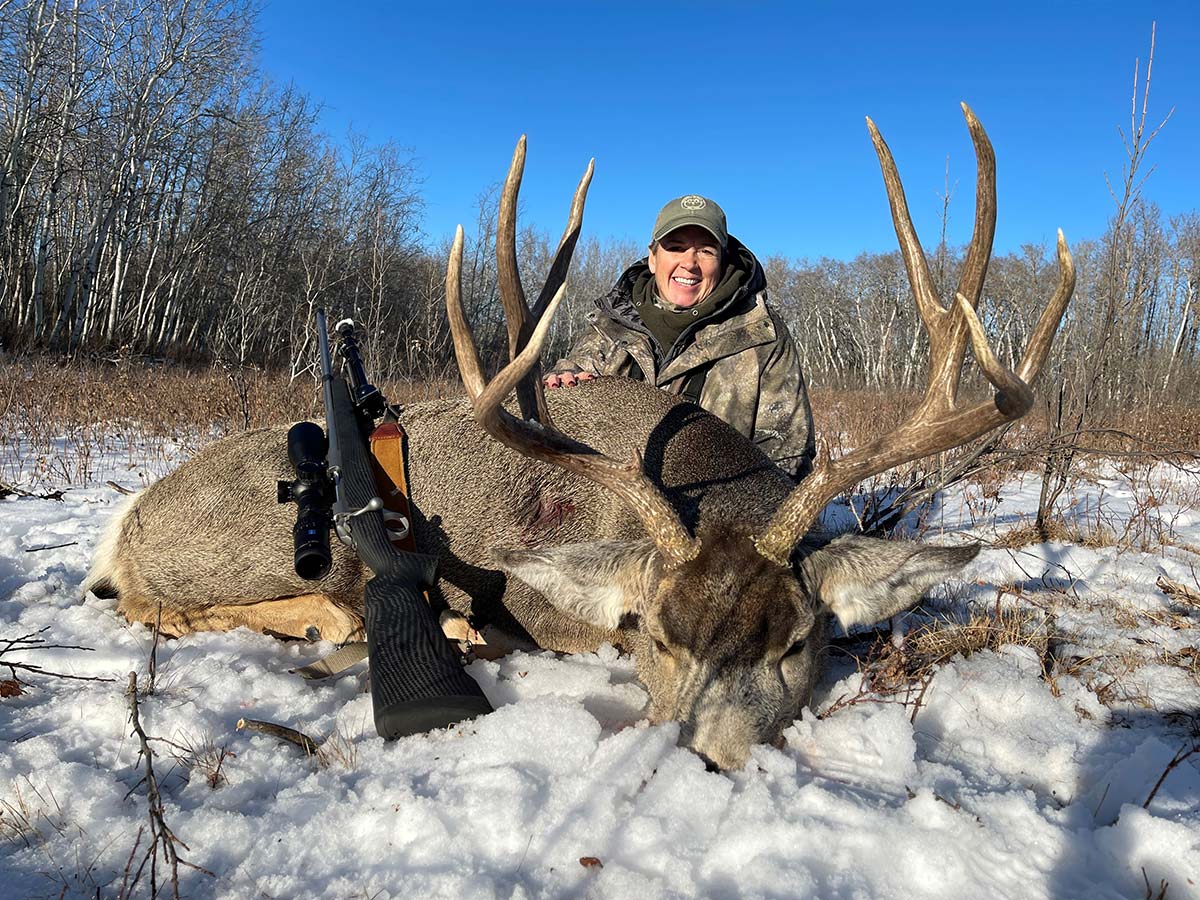
Per our affiliate disclosure, we may earn revenue from the products available on this page. To learn more about how we test gear, click here.



